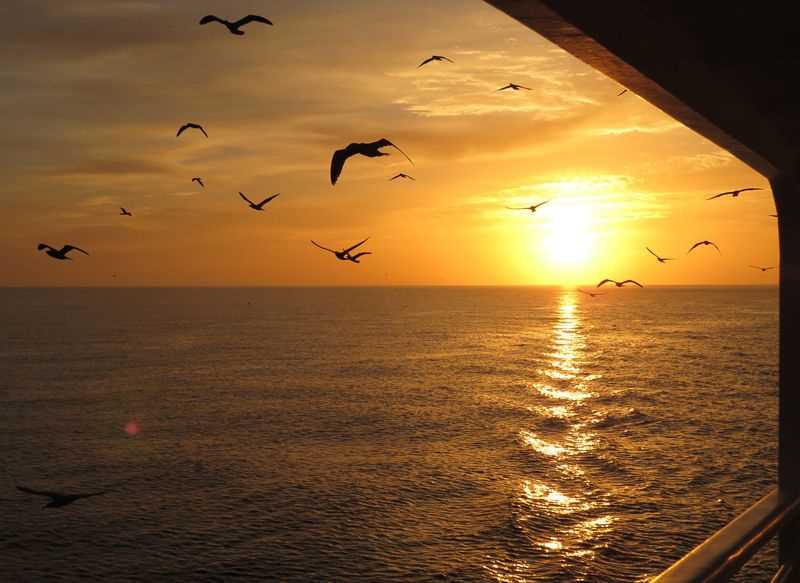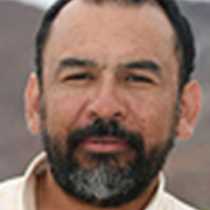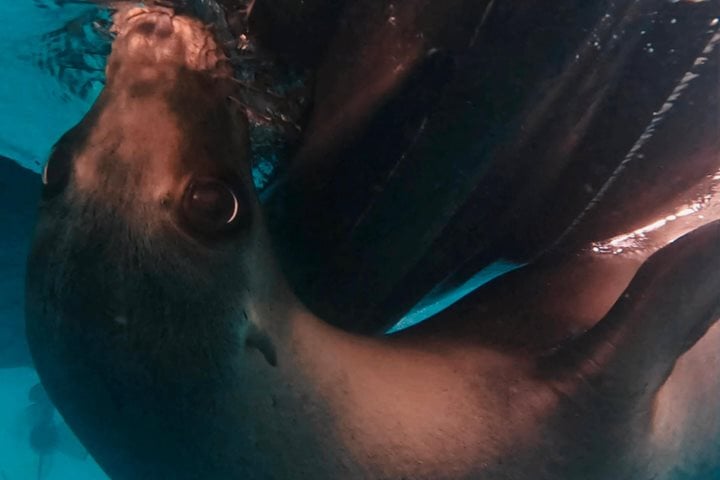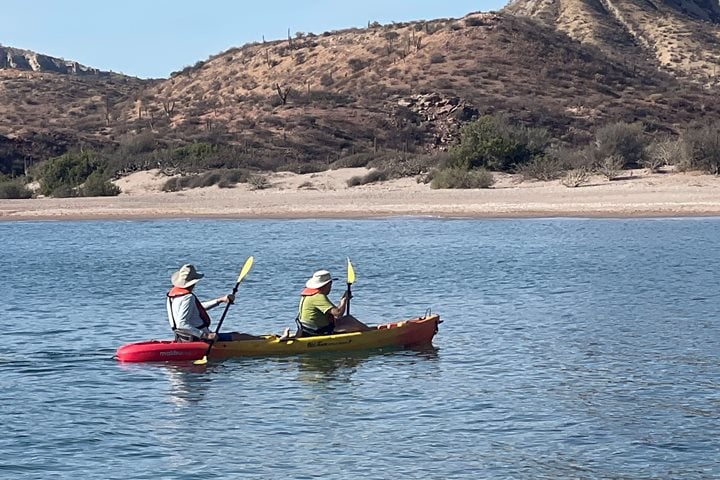San Pedro Mártir Island rises from the waters of the Midriff section of the Gulf of California like a huge, petrified body of a sea monster. Mainly made of volcanic rock, it originated from the mainland of Mexico as a by-product of the northwesterly, tectonic motion of the peninsula of Baja California. Isolated in the middle of the gulf, its visible strata show the long-lasting processes of faulting, folding, and eroding. It also looks white and green! These colors are the sign of great biological activity on its skin: in fact, since the time San Pedro Mártir was “born”, it serves as a nesting place for thousands of seabirds like blue-footed and brown boobies, red-billed tropicbirds, brown pelicans, least and black storm-petrels, murrelets, and shearwaters. They have deposited thousands of tons of guano (their white poop). Cacti grow in great numbers, forming a “cardónal”, or cardón cactus forest, that tints the island with green. It also holds four species of reptiles, including a western diamondback rattlesnake, and has no land mammals except bats. San Pedro Mártir was a powerful attraction for guano mining companies since 1885. The Mexican Phosphate and Sulfur Company extracted and shipped to San Francisco and Europe about a thousand tons of guano each month, for several years. One hundred and thirty eight Yaqui natives, from the mainland of Mexico, worked on the island as miners, accompanied by their families. Our guests saw the traces of that activity as rock walls built at those times. Nowadays, San Pedro Mártir Island is for the people of the world. Our main activity there was to cruise around the magnificent island, looking at the thousands of birds that are already nesting.
Call +1.800.397.3348 or contact your travel advisor







